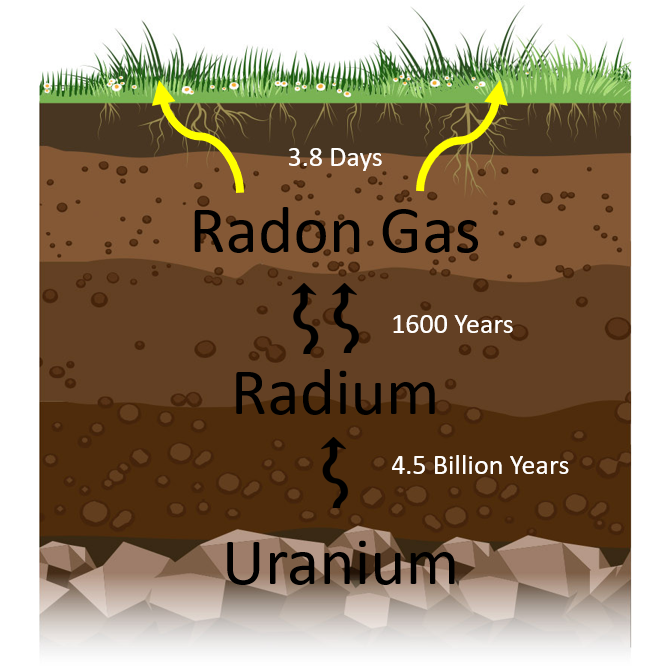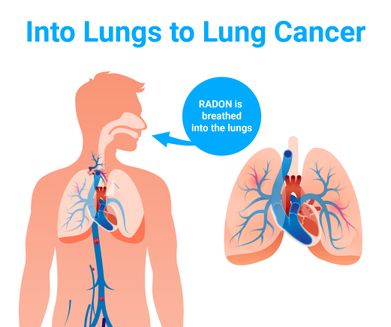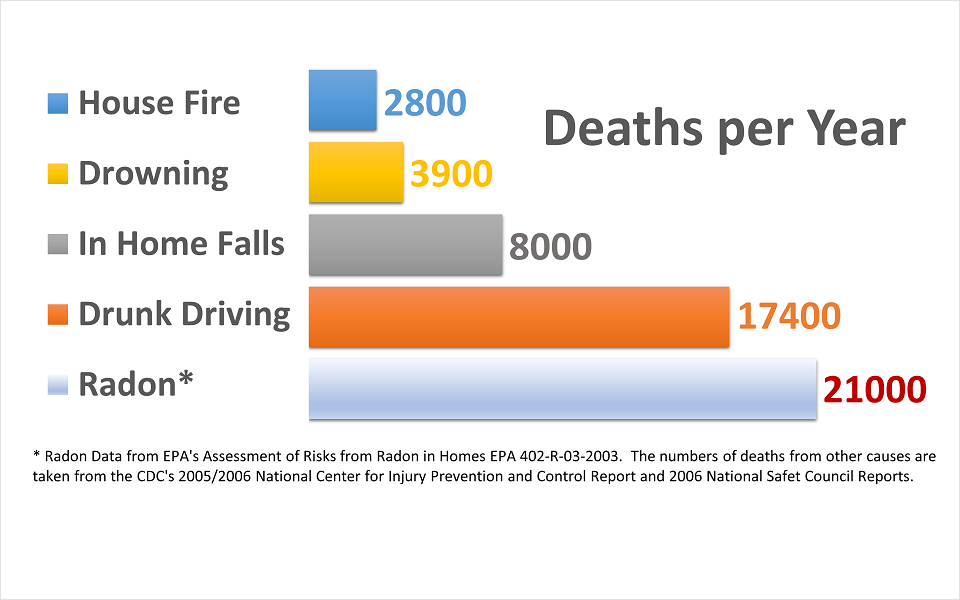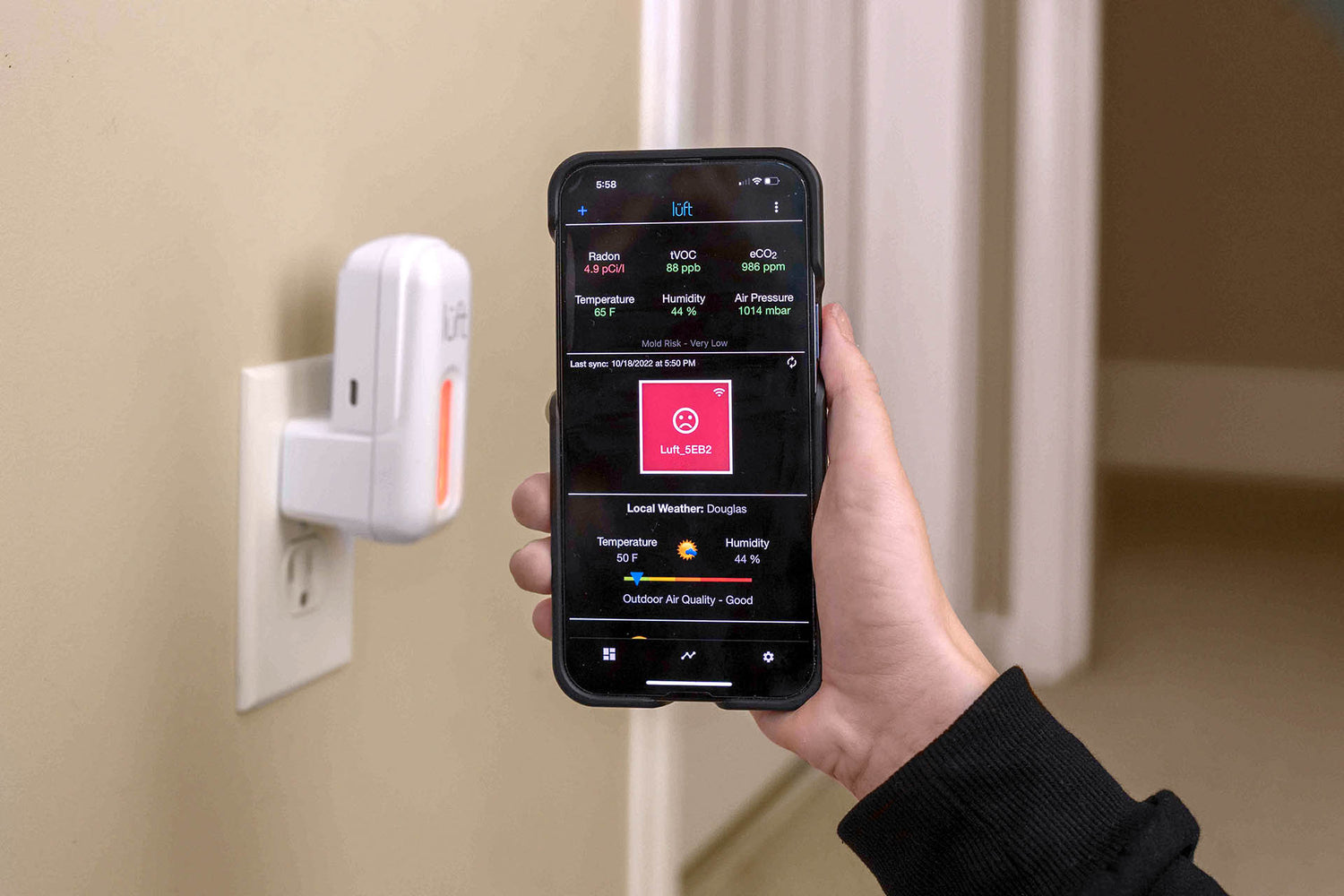What is Radon?
Radon is a naturally-occurring, radioactive gas that you cannot see or smell. Radon is normally found at very low levels outdoors but can accumulate in the air in your home. Breathing in elevated levels of radon over long periods can lead to health issues including lung cancer. In fact, radon is the leading cause of lung cancer among non-smokers, according to the EPA.
How Radon Enters Your Lungs
-

From Soil...
Radon occurs as part of the radioactive decay chain through which uranium slowly decays into various short-lived radioactive elements including radon gas.
-

...Into Homes
Radon gas in the soil and water around your home can enter through tiny cracks and gaps and accumulate in the air inside your home.
-

...Into Lungs
Radon and its decay products attach to dust and other particles and are breathed into the lungs where it can damage the DNA, eventually leading to you developing cancer.

Dangers of High Indoor Radon Levels
Radon is the second leading cause of lung cancer and the cause of more home related deaths than home fires, drowning, and in home accidents ...combined. It is even more deadly than drunk driving! Monitoring your indoor air for Radon is easy, affordable, and helps you to identify potential exposure to take actions!
Why Long-Term Radon Monitoring?
Short-term testing of less than 7 days is the quickest way to screen your home for radon. But as radon levels can fluctuate only, long-term monitoring reveals your true radon risk!

Why Radon levels fluctuate
Weather and sesonal changes
Rain, snow, wind and air pressure all can impact radon levels in your home.
Constructions
If you remodel your home or if there is construction taking place in your neighborhood, this can all have an impact on the levels of radon you are exposed to.
Changes to your home
Settlement cracks, deterioration
of vapor barriers and more can affect how much radon can accumulate inside your home.
Mitigation system failure
Fan failure, piping blockage or electrical failure can all lead to quickly rising radon levels.
Did you know?
Every 1 in 15 homes in the US has elevated levels of Radon!
EPA
Steps to Fix your Radon Problem
Guide to Radon Reduction
How to identify a long-term radon problem?
The EPA defines short-term testing as anything shorter than 90 days. It is important to note that short term increases can be caused by a variety of temporary occurrences such as severe weather events. To determine and distinguish between short-term, temporary increases, and long-term risk exposure, please first review the long-term trend charts on your app and read the long-term average provided in the app.
Find a certified radon professional
The only way to know if your home or workplace contains dangerous radon levels is to test for it. Using a lüft Radon monitor is the easiest and most reliable way to identify a potential problem. The next step is to contact a qualified radon professional who will confirm the results and formulate a plan of action. We recommend to searching for NRPP or NRSB certified professionals to guaranty proficiency, quality and good business practices.
Finding a contractor
We recommend you check for and verify the following
qualifications and certifications:
Radon mitigation and post-mitigation inspection
Your chosen contractor will undertake all action necessary to achieve the mitigation of radon levels. An independent, post-mitigation inspection by a certified (mitigation) inspector is highly recommended. This is to ensure your radon levels have been successfully reduced and that your system meets all applicable standards.
Post-mitigation long-term monitoring
This is the simplest step: keep your lüft plugged in during the entire process and watch how Radon levels decrease.
Tip: You can set the Radon level your contractor guaranteed
to maintain as your new warning threshold. You
now can monitor the effectiveness of your
mitigation system. Should you observe any increases in
radon levels, contact
your radon professional to find out why and ask them to take corrective action as required.




